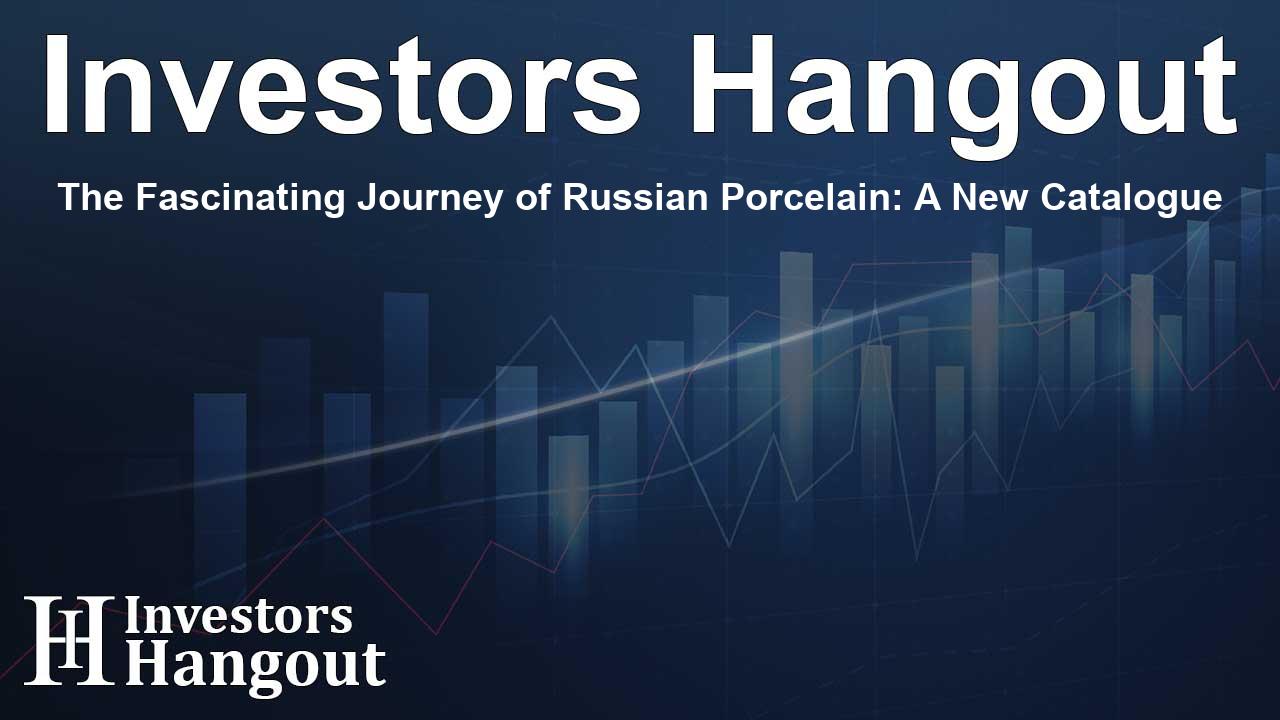The Fascinating Journey of Russian Porcelain: A New Catalogue

Introducing a Remarkable Catalogue on Russian Porcelain
The academic catalogue titled "War and Peace in Russian Porcelain. From the collection of Elena Baturina" was unveiled at an international conference focusing on art collection cataloguing efforts. This significant event brought together art historians, critics, museum directors, and curators who shared their insights on the value of both private and museum porcelain collections.
Highlighting Expert Contributions and Perspectives
The conference showcased a variety of presentations from leading figures in the art world, including Khazar Zeynalov, Deputy Director of the Institute of Architecture and Art of the Azerbaijan National Academy of Sciences, and Igor Dukhan, noted Professor and Head of Art Department at the Belarusian State University. They emphasized the beauty and scholarly impact of Baturina's collection and the catalogue itself in enriching art history.
Noteworthy Remarks on the Collection
John Bowlt, founder of the Institute of Contemporary Russian Culture, along with Nicoletta Misler, an art historian, conveyed their admiration for Baturina's extraordinary effort in assembling this vast collection. They remarked on the catalogue as a beacon of scholarly dedication, praising the monumental task of compiling such an in-depth resource.
The In-Depth Process Behind the Catalogue
Natalia Sipovskaya, Director of the Institute of Art Studies and the publication's scientific editor, explained the extensive process of creating this catalogue, which spanned over seven years with contributions from over 100 specialists. The resultant 1,500-page catalogue features stunning photographs and comprehensive analyses of remarkable works, tracing the history of Russian porcelain from the era of Catherine the Great to Nicholas II.
Volume Breakdown and Historical Context
The catalogue is divided into three volumes titled "GLORY. Russian Imperial Porcelain: Presentation Pieces", "WAR. Items Painted with Military Figures", and "PEACE. Ceremonial Porcelain of Russian Dinnerware". Each volume meticulously describes 1,500 items from a collection of 2,000, ensuring that significant events in the domain of Russian porcelain are showcased alongside their artistic, historical, and cultural backgrounds.
A Unique Accumulation of Artistry
The authors of the catalogue achieved something remarkable by compiling a scientific apparatus that documents and analyzes varied forms and decorations of imperial porcelain, including unprecedented materials on the uniforms of Nicholas I's army and flora in porcelain. This gathering of knowledge allows for a deeper understanding of the craftsmanship and artistry of the time.
Comparing Value and Uniqueness
Experts have noted that Baturina's collection contains approximately 500 unique pieces absent from other collections, making it a treasure trove for researchers and art enthusiasts alike. The inexplicable value of the collection goes beyond mere monetary estimates, providing invaluable insights into the historical, artistic, and cultural narratives encapsulated within these porcelain masterpieces.
Global Distribution and Significance
Copies of the catalogue in English have been sent to major art museums, academies, and libraries worldwide. The expectation is that this publication will foster new discoveries in art history while promoting the overall appreciation and understanding of porcelain artistry across cultures.
Frequently Asked Questions
What is the significance of the catalogue presented?
The catalogue highlights the artistic and historical importance of Russian porcelain, offering insights into both its collection and contextual significance in art history.
How long did the catalogue production take?
The production of the catalogue took seven years and involved over 100 specialists to ensure comprehensive coverage of the items included.
What are the main themes of the catalogue?
The catalogue is organized around themes of glory, war, and peace, showcasing presentation pieces, military figures, and ceremonial dinnerware.
How many unique items are included in the collection?
The collection boasts approximately 500 unique works that do not exist in any other collections, underscoring its rarity and historical value.
Who are the contributors to the catalogue?
The catalogue features contributions from various art historians and experts, providing a diverse range of perspectives and insights.
About The Author
Contact Hannah Lewis privately here. Or send an email with ATTN: Hannah Lewis as the subject to contact@investorshangout.com.
About Investors Hangout
Investors Hangout is a leading online stock forum for financial discussion and learning, offering a wide range of free tools and resources. It draws in traders of all levels, who exchange market knowledge, investigate trading tactics, and keep an eye on industry developments in real time. Featuring financial articles, stock message boards, quotes, charts, company profiles, and live news updates. Through cooperative learning and a wealth of informational resources, it helps users from novices creating their first portfolios to experts honing their techniques. Join Investors Hangout today: https://investorshangout.com/
The content of this article is based on factual, publicly available information and does not represent legal, financial, or investment advice. Investors Hangout does not offer financial advice, and the author is not a licensed financial advisor. Consult a qualified advisor before making any financial or investment decisions based on this article. This article should not be considered advice to purchase, sell, or hold any securities or other investments. If any of the material provided here is inaccurate, please contact us for corrections.
